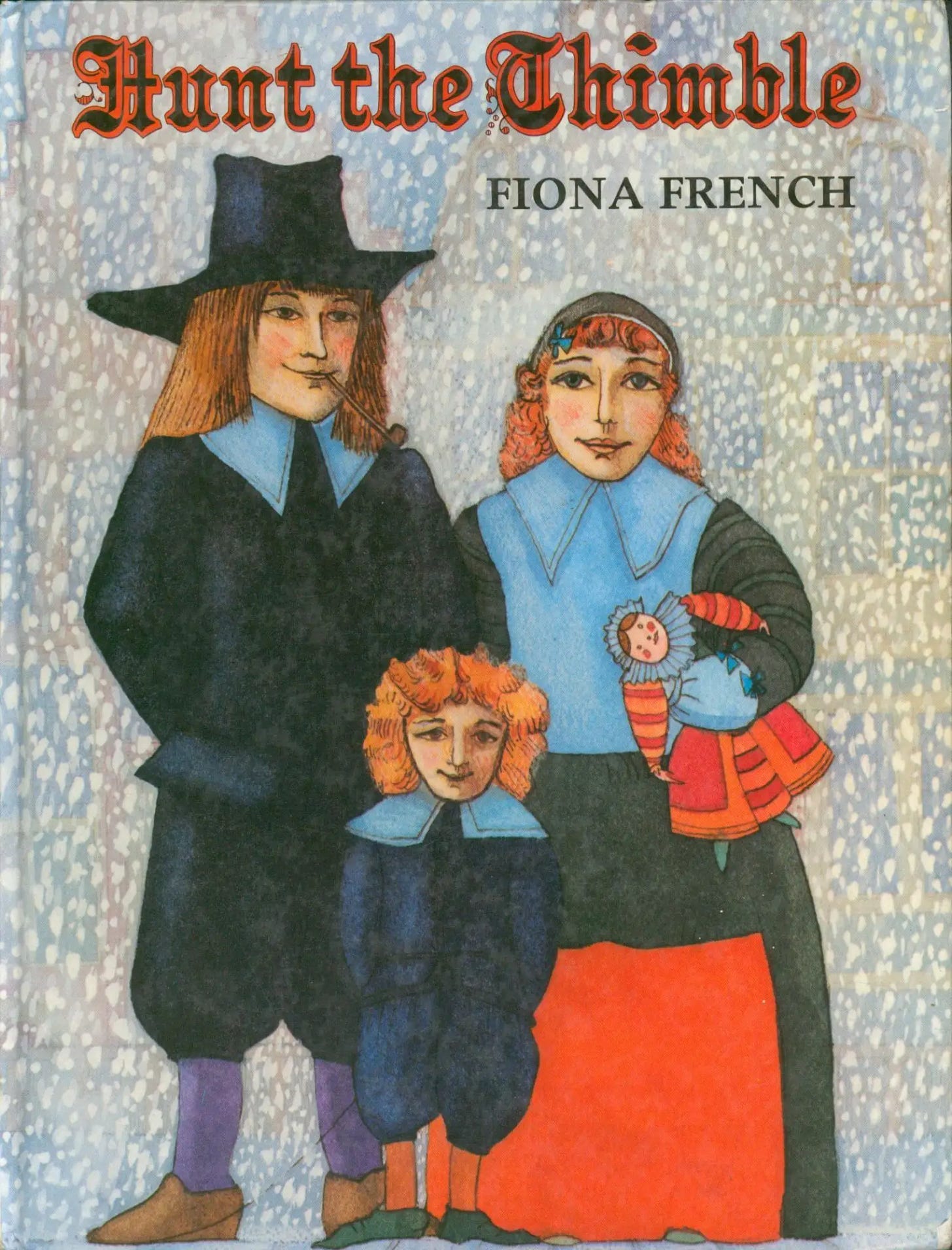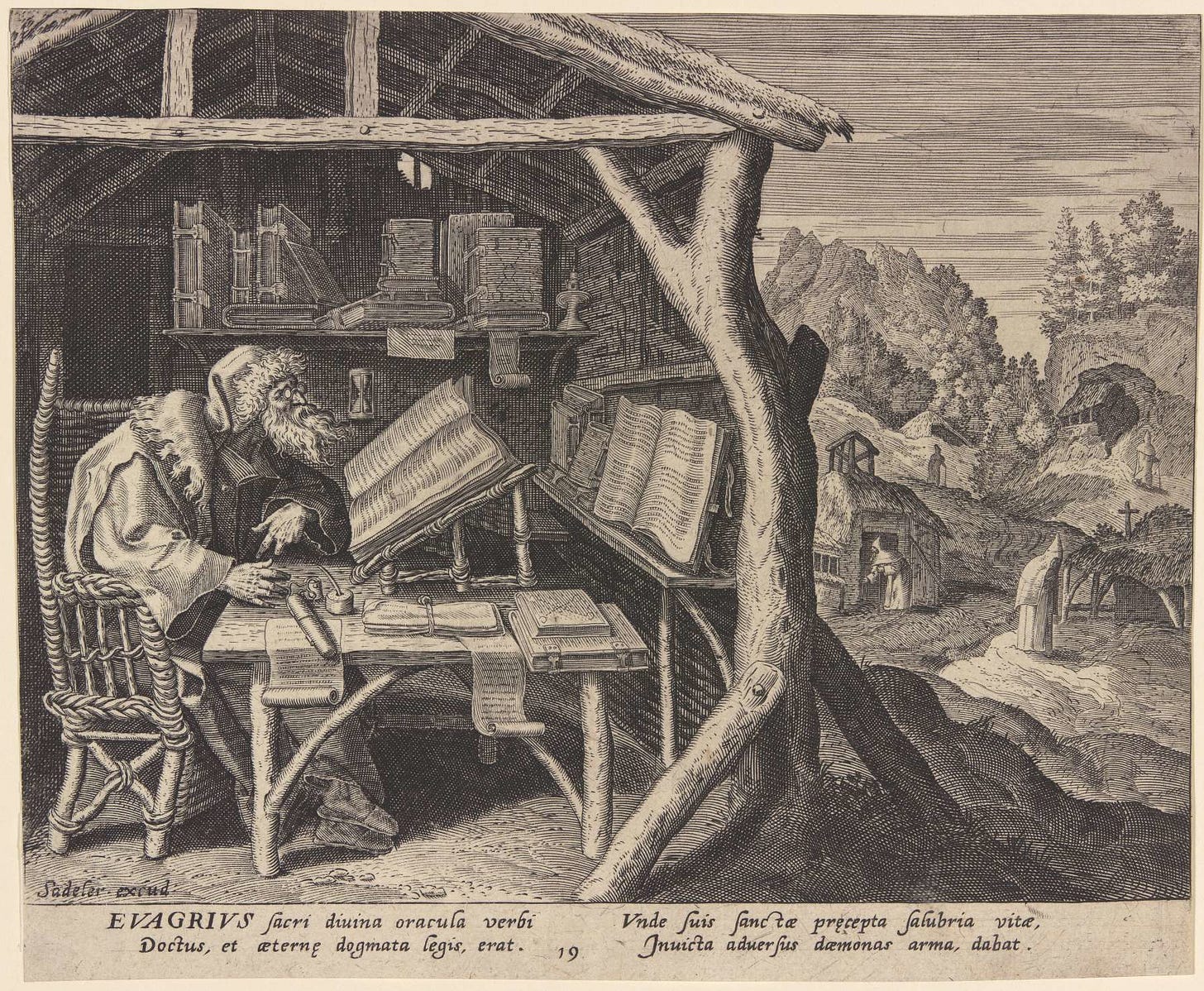Another Me: Practicing seeing the world anew
On Evagrius of Pontus, Pete Holmes, and the world's best parlor game
There is no closer inspection of my living room than when we play Hunt The Thimble.
It’s a cruel game—simple, but cruel. While the rest of the group leaves the room, one remains to hide a thimble in plain sight. You can’t put it inside something else, or behind a curtain, say, so that as soon as players are welcomed back into the room, they should be able to see the thimble. Even though, of course, they rarely do.
Tense minutes go by as eager eyes scan the sideboard, the lampshade, the candlesticks…until eventually someone spots the silver thimble. But here’s the key! When you find it, you have to pretend to keep searching for a little while, keep moving around the room, and then gracefully, quietly, sit down.
Oh, there is nothing more delicious than gliding into a chair, watching the remaining fools fail to find the now-very-obvious thimble on the light switch, picture frame, or bookshelf. And, oh, there is no humiliation as savage as being the last to find that god-awful thing—getting increasingly desperate as you ask for hints while the rest of the group giggle at your inadequacy!
(Longtime readers might correctly guess that, yes, this game does come from my grandmother—but it seems it is played more widely in Holland, as this book attests!)
I was once again hunting the thimble with friends on Friday last, and, once again, late to find it. “I’m a big picture kinda guy! Not so good with the details!”, I protested, though the thimble was always right there—often where I had looked two or three times. I just didn’t see it.
It’s not news that how we look at the world shapes our experience of it. Rowan Williams’ book Passions of the Soul has a delightful exploration of this theme—drawing on the wisdom of Evagrius of Pontus.
Evagrius was a fourth century monk living in (what is today) northern Turkey. He ran away to the Egyptian desert after a scandalous affair and spent his days eating mostly raw food (very Brooklyn circa 2014) and praying (maybe not so Brooklyn 2014.)
Williams describes how Evagrius systematized how we look at the world in three ways:
“The angelic way of seeing things is seeing things just as they are, just as they emerge from the hand of God, we might say—an almost Zen-like clarity, perceiving the world in its simple thereness, resting on nothing but the creative act of God, glowing in its reality.
The diabolic way of seeing the world is the opposite—the world of kind of supermarket consumerism in which we experience and assess what is around us simply in terms of its profitability to us, as if it had no meaning except what our wants and fantasies projected on to it: never mind what it is, what can it do for me?
And the human way oscillates between these two, wobbling between the extremes, trying hard to see things straight but constantly slithering back into the self-referring mode of perception—stuffing the world into the bag of the ego.”
No surprise: what Evagrius wants us to be working towards is the angelic way of seeing, but he’s eager to remind us that this doesn’t mean that we stop being human.
“On the contrary,” writes Williams, “we are most properly, most fully, human when we are able to live into this angelic liberty, because unless we grow into this, we are always going to be slipping down to being less than human.”
But what does growing into that angelic liberty look like?
Maybe a little bit like this practice from comedian Pete Holmes: when looking at other people, he says, “I like to call other people ‘me'. Like, ‘Oh these me’s voted for Trump.’ or ‘This me is driving me to the airport.’ I find that useful.”
He explains more in the video below (starting at minute 2.03.)1
Isn’t that striking? What a beautiful practice to grow our compassion and remind us of our inherent interconnection.
I guess claiming my friends thimble hunt victories as a win for other me’s isn’t quite what Evagrius was getting at, but I’ll take it :)
PS. If you’re interested in learning more about Evagrius, check out this conversation I had with scholar Dr. Michael Motia about how Evagrius visualized the divine—as the color blue!
Thanks to my friend Lianne Coble-Dispensa for the video tip!






The "me" video is a wonder!
Thanks, bring back lovely memories! And reminding me to slip (my mum’s) thimble in my pocket when travelling soon to Italy where I hope we’ll find appropriate places to hide it when with a group of friends!
Thanks for the comparisons, Casper, food for thought!